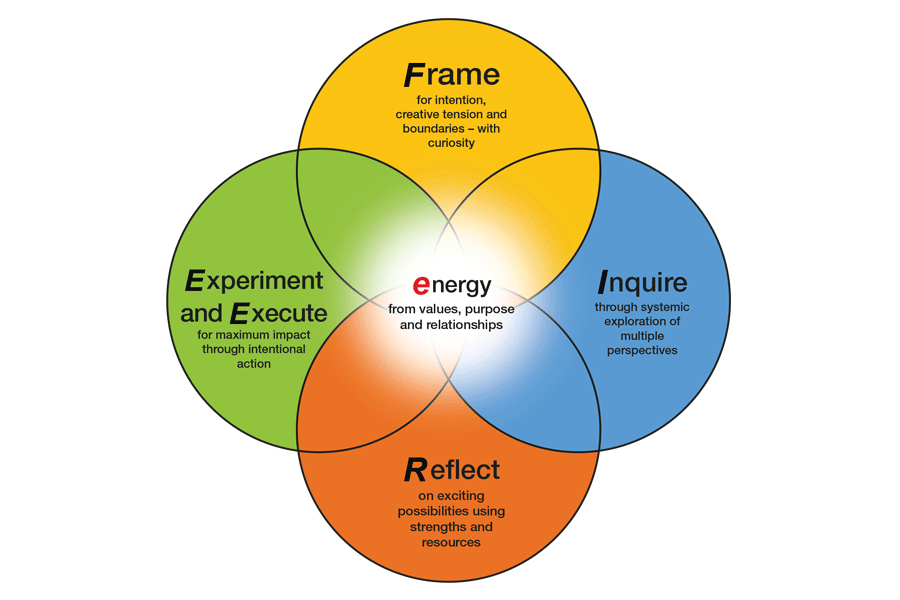Coaching for Success
The model in action

© QUT Graduate School of Business
The eFIRE model is designed to give you the flexibility needed to have coaching conversations in a range of contexts. The focus of each mode of conversation supports action and progress.
Framing the conversation
Every coaching conversation has to start somewhere. You may find that a coaching moment presents itself while discussing problems or workflows with a student or colleague, or you may find it useful to schedule time dedicated to having a coaching conversation. Either way, establishing a topic of conversation that is important for the student is the first task within the eFIRE coaching model (Frame). It’s important not to move on too quickly from establishing the topic of conversation, so be sure to ask a range of questions that help you, as WIL partner, and the student, as coachee, to understand the scope and implications of the topic before moving on.
Inquiring to discover more
Once you have framed the conversation that is to take place, begin to dig deeper into the nature of the issues being discussed (Inquire) so that the student can explain what they see as the positives and negatives, causes and effects, and alternate ways of thinking about the topic you are both discussing. Once it is clear that the student has reached a deeper level of understanding the topic, you can shift to a more Reflective mode of conversation. Reflecting on the topic allows for reasonable possibilities and solutions to emerge from the discussion, as well as critiquing existing mindsets and ideas about the topic itself.
Experimenting and executing the plan
Once a desired course of action is identified, encouraging the student to Experiment with their ideas and develop a strategy for Execution is the final piece of the coaching puzzle. In this way, the student leaves the conversation with a clear action plan for tackling the problem or issue framed as the purpose of the conversation.
Core energy
The above description for the model sounds quite linear, and you might also ask where energy fits into the model. Simply put, energy focuses on the emotional and cognitive energy displayed by the student throughout the conversation. If the conversation seems to be losing momentum or ‘going around in circles’ then the remedy is to shift to a different aspect of the eFIRE model, or asking probing questions to remind the student of the value of learning from the conversation. In this way, energy sits at the core of the model and acts as a key performance indicator for the discussion – if energy seems low, try to find some through clever questioning or shifting to one of the different modes of conversation.
Getting started
Download the guide for your future reference. It includes the model and example questions. Have it on hand when you are preparing to coach others.
Student check point
It’s easy to assume the eFIRE model is something for the coach to use to lead a conversation, but it’s equally important for you, as the person on the receiving end of the coaching conversation, to be aware of the different perspectives and phases of conversation that underpin coaching. That is, you’re expected to be an active participant in a coaching conversation, and if you feel you need to move to a different phase of the eFIRE model, you can signal this to your WIL partner/coach so that you can maximise the learning experience.
Wil partner check point
The eFIRE model is not a linear model, so it’s important to become comfortable with the idea of shifting conversations iteratively through the different phases of the model depending on the focus and insights developing in the coaching conversation. The key to successful coaching conversations is to remain part of the conversation, and also to keep an eye on the overall picture of the conversation. That is, listen carefully to the messages and sub-text in the student’s discussion to identify appropriate questions to keep the exploration and energy going, and at the same time, keep track of how much energy has been invested into each of the phases of the eFIRE model to ensure all aspects of the eFIRE model are addressed across the duration of the conversation.
